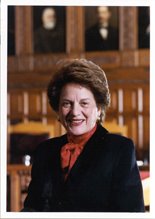The anonymous Editor of Blawg Review has once again foisted upon those that have written a Blawg Review (or are currently signed up to write one) the miserable job of picking the “best” of the year.
The problem, of course, is that picking the “best” is highly subjective. There’s no scale to weigh these things. And yet, someone must sit on this jury.
And so, since I’m now a juror, I’m going to pick based on who I think the best storytellers are. And that’s because, as attorneys, what we do is tell stories to present our client’s side of how something occurred. If a juror’s eyes glaze over in boredom then being right won’t help you. And woe unto the lawyer that self-promotes. Do either jurors or readers want to hear self-promotional stuff?
To keep the attention of jurors (or Blawg Review readers), I want to put them in the action. There are no warm-up comments, thank yous, explanations, or other time-wasting crap. Every opening argument I’ve ever given starts exactly the same way: “Today we turn to the clock back to…” and off we go into the middle of the story where I like to start. It’s all about the story. Jurors need to be interested in what’s going on. And so do review readers.
Mere lists of facts can be boring. I don’t generally use them unless I have to.
It can also be hard to shoehorn posts into specific legal topics for a Blawg Review, which many try to do to fit the theme of their blogs. It’s a trick that is tough to pull off. But tell a good story, and leave yourself open to any facts (good blog posts) that you see, and you’ve opened the review up to range near and far on anything of interest.
In fact, when I did my reviews based on the NYC Marathon and Thanksgiving with Arlo Guthrie, storytelling was the technique I used. I kept away from legal themes and I focused on social gatherings, where anyone can talk about anything. I didn’t spend any time with introductory comments. Chuck a little fantasy into the mix of putting people at your side during a race or a dinner, and you can go anywhere with the story so long as you grab their attention and hold it. And I tried, as much as possible, to do it in such a fashion that readers would want to click the links and be sent away from my review. Because that, after all, is the idea behind these weekly reviews.
And so, without further ado, I nominate these three storytellers for Blawg Review of the Year, followed by eight Honorable Mentions:
- Rush Nigut of Rush on Business took us during Blawg Review # 147 on the annual Register’s Annual Great Bicycle Ride Across Iowa. He was kind enough to put bloggers right into the middle of the race. Without Rush, I never would have learned about Mr. Pork Chop.
- Mistress Ruthie hosted Blawg Review #160 at Ruthie’s Law, captivating this juror not with the story, but with the persona of the storyteller. She (?) doesn’t waste time with an introduction explaining what she is doing. She just does it. And you get it. And you merrily click on links and come back for more amusement. The law doesn’t feel like work.
Having done that, I also need to give an Honorable Mention to the following:
Charon QC at Blawg Review #141, set the bar high at the start of the year with a review that puts many others to shame. Even if you never clicked a link, the review was (and is) worth reading for the wordsmithing alone.
Marc Randazza at the Legal Satyrcion did a brilliant job on Blawg Review #190 Bill of Rights Day. Did I say previously that “mere lists” can be boring? Or sticking to legal themes often doesn’t work? Well the Bill of Rights is the greatest of all Top Ten Lists, and Randazza picked a legal theme for sure, and proved me wrong on both counts on how to put a review together. Easily one of the ten best of the year.
Mediator Victoria Pynchon at The IP ADR Blog picked virginity as a theme for Blawg Review #171. Now how bold was that? She also happened to have done what appears to be the longest review of the year, chock full of so many links it boggles the mind as to how long she must have worked on it.
I liked Joshua Fruchter’s Blawg Review #187 on Evolution Day at his site LawyerCasting. Since the law, and the practice of law, is constantly evolving, it is a theme that lends itself to most anything the writer wants, and in this case he successfully integrated his theme with his practice area. And that is a tough trick to pull off.
It’s worth noting that some had difficulty sticking with the themes they picked, and they wisely abandoned them rather than try to force the issue. George Wallace at Declarations and Exclusions went with a pirate theme at Blawg Review #153, before admitting (aaargh) “We have no posts to link actually involving pirates, in the traditional non-intellectual property sense, but we can present a selection of items dealing with more shorebound offenses.” And off he went for a great review, albeit having little to do with piracy.
Perennial Blawg Review of the Year winner Colin Samuels, at Infamy and Praise put up a daring Blawg Review #189 with the Rime of the Ancient Mariner theme. While picking one of the great stories of literature to tell, he ran into problems when he realized he couldn’t quite sustain the literary element with a journey through the law. (Of course, it didn’t stop him from doing an exceptional and captivating review.) He wrote:
The Mariner chose a life at sea and experienced all that it offered — the mundane and the extraordinary, the routine and the exceptional, the company of crewmates and the boatload of corpses. Similarly, our experiences with the law mix the usual with the unusual and….
Forget it. I’m reaching; you know I’m reaching. Let’s end this charade, shall we? Look, I’ll level with you… I need a section in this Blawg Review where I can put a number of excellent posts concerning substantive legal issues. I’m going to do it here and I’d appreciate it if you’d just nod and go with it, OK? Thanks.
David Gulbransen at Preaching to the Perverted did Blawg Review #182 in a very imaginative exam format, which perfectly suited the fact that he had just taken a blizzard of them.
Anita Campbell at Small Business Trends went with a straightforward list for her Blawg Review #177. And if you are going to go with a list, this is certainly the way to do it. Nice and clean. David Giacalone of f/k/a, who famously wrote that he often finds “themed Blawg Reviews to be annoying, strained and distracting” probably loved it.
Finally: To those nominated and those honorably mentioned, I’ve tried to find your law firm web site in addition to your blog to give you a little Google juice, because you earned it. I missed some, but if you send me the link, I’ll add it in. Email: blog [at] TurkewitzLaw [dot] com
 Every blogger gets spam. I expect it from the various hustlers who permeate the web. But I didn’t really expect it from a law firm. From a big law firm.
Every blogger gets spam. I expect it from the various hustlers who permeate the web. But I didn’t really expect it from a law firm. From a big law firm.

